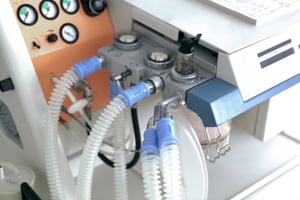The medical device industry is already feeling the effects of the Artificial Intelligence (AI)...
The Importance of Picking the Right Predicate Device
Medical devices undergo a strict and rigorous evaluation by the Food & Drug Administration (FDA) to obtain approval for the US market. Suppose you want a Class II medical device cleared for sale in America. In that case, you need to be familiar with predicate devices (predicates) and how to support your substantial equivalency claims with carefully crafted documentation.
Should the FDA determine that a new device is substantially equivalent to the predicate device, it is possible to get the new device cleared for sale through a 510(k) submission.
What Is a Predicate Device?
When you are pursuing market clearance for a new, Class II device, the FDA allows you to demonstrate that your new device shares the same similarities to a medical device cleared to be legally sold in the USA (substantial equivalence). The already cleared and legally marketed device is the predicate device. A predicate device provides crucial scientific or technical evidence that addresses the question of a new medical device's safety and effectiveness before it is introduced into the market.
To establish substantial equivalence, you have to put up a strong case demonstrating that your device has a similar intended purpose and comparable safety and efficacy as the predicate device. Typically, you have to be familiar with the two categories of predicate devices:
- Pre-amendment devices: These were the legally marketed devices in the US before the Medical Device Amendments (MDA).
- Post amendments devices: These are the devices brought to the market after May 28, 1976, via 510(K) submission or pre-market approval.
What is a 510(k) Process?
A 510(k) refers to the pre-market submission that medical device manufacturers make to FDA. The submission demonstrates that the device to be marketed is safe and effective.
In a 510(k) submission, the medical device manufacturers cite the predicate device to determine their testing methods' appropriateness. In a nutshell, they use the predicate device as a point of comparison for new medical devices that needs clearance through the FDA's 510(k) pre-market pathways.
How is Substantial Equivalence Determined?
A 510(k) requires a clear demonstration of substantial equivalence before you are allowed to market your device in the USA. Your medical device must establish substantial equivalence when compared to a predicate. A substantially equivalent device has the following attributes
- The device has the same intended use as the predicate.
- The device has the same technological features and characteristics as the predicate.
- The device has different technological features and characteristics that don't lead to effectiveness and safety concerns.
A claim of substantial equivalence doesn't mean your new device and the predicate devices have to be identical. The FDA determines substantial equivalence through the following steps:
Step 1: The FDA determines whether the new and predicate device has the same intended use. The FDA also confirms that any existing differences in technological characteristics don't raise questions on safety and effectiveness.
Step 2: If everything in step 1 checks out, the FDA determines if the device is as safe and as effective as the predicate. They do this by reviewing the scientific techniques and methods that were used to evaluate performance data and the differences in the technological characteristics. Performance data typically cover a wide area touching on evaluation, electromagnetic biocompatibility, software validation, sterility, and engineering performance testing, among other data.
What Makes FDA Conclude There is No Substantial Equivalence?
The FDA website's available data reveals approximately 3.5 percent of 510(k) submissions resulted in a Not Substantially Equivalent (NSE) determination in the period between 2001 and 2011. The FDA can determine your device is NSE due to the following:
- No predicate: In this instance, a suitable predicate doesn't exist in your submissions.
- New intended use: In this case, the new device's intended use is different from the predicate's intended use. This usually occurs due to a finding that changes in indications of use which creates a new intended use.
- New technology: Here, the technology used is determined not to be substantially equivalent to existing technology for the predicate.
- Lack of performance data: The FDA can rule that there is a lack of performance data if you fail to provide performance data in your 510(k) submissions or provided inadequate data. This can also happen if the data provided failed to demonstrate the device's performance to be equivalent to the predicate.
- Use of split predicate: In 2014, the FDA prohibited medical device manufacturers from using "split predicates" to show that their new devices are effectively the same as devices already on the market. Split predicates refer to separate predicate devices that have different intended uses.
What happens if there is No Substantial Equivalence?
You will not be allowed to market a new device in the US before you receive a letter from the FDA that finds it substantially equivalent. Should FDA find that your device is not substantially equivalent, you have the following options:
- You can resubmit a different 510(k) with another set of information and data that addresses the FDA's questions based on the review of the prior 510(k).
- Submit a pre-market approval application (PMA).
- File a reclassification petition
- Request a Class I or II designations through the De Novo Classification process
The NSE has two basic categories of determinations, each with different consequences. This next section discusses them in detail.
The Two Categories of NSE Determinations and Their Consequences
NSE category 1: This category includes several different decisions such as a lack of predicate device, a new intended use, or different technological characteristics that raise questions of safety and effectiveness. In such a scenario, the FDA will most likely provide you with an opportunity to respond to the concerns raised through a Request for Additional Information letter.
NSE category 2: This category targets devices whose information provided in the submission is insufficient to demonstrate substantial equivalence to the predicate device. In such a scenario, the FDA requests additional information related to performance testing so that the evaluation of substantial equivalence is completed. If you fail to provide the information, the FDA may consider the response incomplete and place your submission on hold.
Pro Tips For Selecting The Ideal Predicate Device For A Successful 510(K) Submission
The tips below will come in handy when choosing the right predicate device for a 510(K) submission.
Choose based on similarities
The FDA recommends you choose a predicate device that is most similar to your device in respect to the use and technological characteristics. Similarities that help build your substantial equivalence argument include intended use, design, energy usage, materials, performance, safety, effectiveness, and labeling.
Choose more recently approved predicate
Going for a more recently approved predicate is preferred. Note that technological innovations have rapidly advanced since 1976.
Go through the list of cleared devices
The FDA 510(k) databases list all devices that have been cleared. Start your search for the right predicate device from this database.
Get Guidance Through The Process
A 510(k) submission can be a complicated process that requires a lot of organization and attention to detail. Although they are not the only way to get a Class II device to market, 510(k) submissions are the most commonly used one due to their high success rates.
A thorough demonstration of substantial equivalence to predicate devices is key to a successful submission. To learn more about how to get FDA clearance for your medical device or pharmaceutical, subscribe to our blog.




